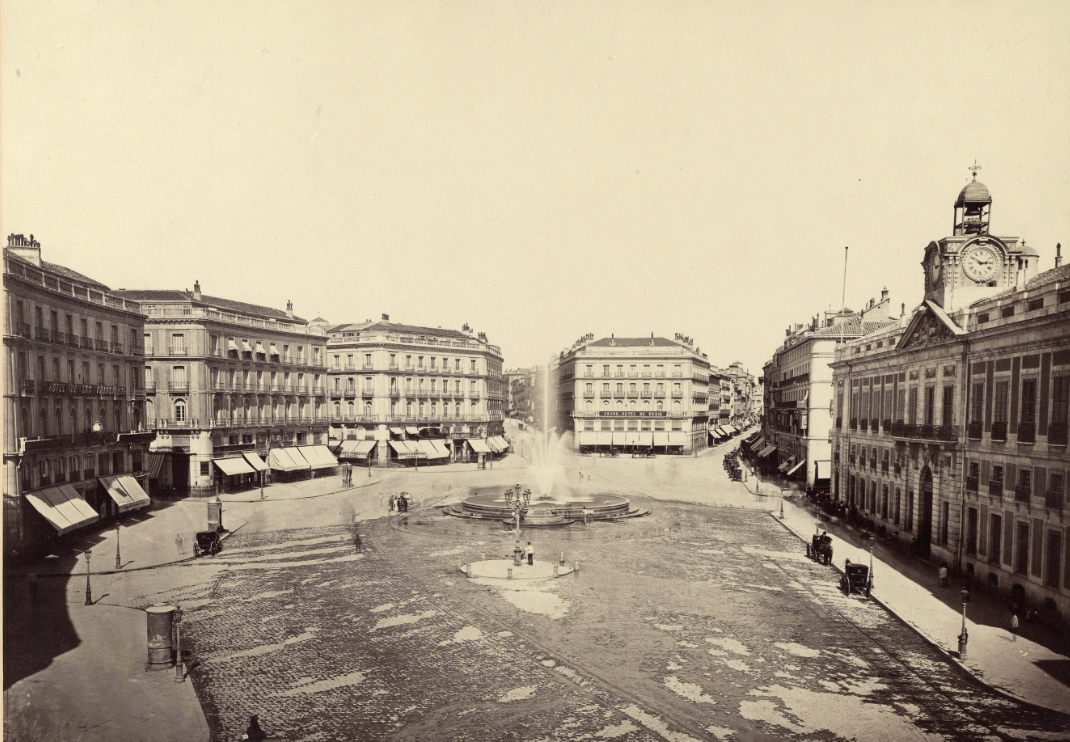
Yes, it is coming, it is very little to say goodbye to a good year, 2019, and inaugurate not only a new year but a new decade: 2020. And as the song of Mecano says, which has become a hymn in these dates, “And in the clock of yesteryear as from year to year, five minutes before the countdown, we take stock of good and bad, five minutes before the countdown” …
And we are looking forward to meet again with this jewel that we have in Madrid and that is not only an architectural reference, but also a historical one.
Although everyone knows it as the Puerta del Sol clock, its name is actually the Governorate Clock, and it is a tower clock placed on a temple above the Post Office in Puerta del Sol. It was inaugurated in the 1866 by Queen Elizabeth II on the occasion of her birthday.
This year, in 19, he has completed nothing more and nothing less than 152 years, and has a lot of curiosities that we are sure you do not know:
- The watchmaker who did it took a whopping 3 years to build his machinery. It is the work of José Rodríguez Losada, a Leonese watchmaker exiled in London.
- The first reference, as a clock, in Madrid was that of the missing church of Buen Suceso (where the Apple store is now). But it was extremely inaccurate having only one hand. That is why the new one was made, which curiously was equally inaccurate when marking a different time each of the three spheres it had.
- The current one is only delayed 4 seconds a month (a triumph in watchmaking). One of the reasons: its long pendulum of 3 meters.
- Although the watch survived the Civil War, it was damaged by a bomb that fell in the fall of 1936 in the Plaza Mayor. From there, only one of its spheres was replaced by copying the rest of their faces.
- In 1928 one of his weights was broken and he crossed the ground, reaching one of the offices on the lower floor. Fortunately there was nothing but regretting material damage.
- The ambassador of Venezuela, in 1952, made an offer to buy it from the Madrid City Council, which did not yield (fortunately).
- For many years, the time signals that marked the beginning of the information services of National Radio of Spain was the sound of the chimes of this clock.
- Although now it seems completely normal and natural to see the chimes of this clock through television to celebrate the end of the year, the truth is that it was not until 1962 that they were broadcast for the first time.
- Until 1990, the person in charge of this broadcast was Matias Prats (father).
- The ball that falls marking the beginning of the 12 bells, curiously is not part of the clock. It was added in 1890 so people would know when the rooms started (which continue to cause confusion today).
- The watch has a whole team of professional watchmakers, with Jesús López-Tarradas in front, who take care of having everything ready and who check their machinery every month.
- Every New Year’s Eve night, the López-Terradas team removes the retainer that holds it when exactly 28 seconds remain for the clock to set twelve. The ball takes 7 seconds to fall; the other 21 seconds are those that occupy the four touches of two chimes each.
So you know more about this element that is part of our lives and that brings together more Spaniards “doing, for once, something all at once.”
Happy New Year!


